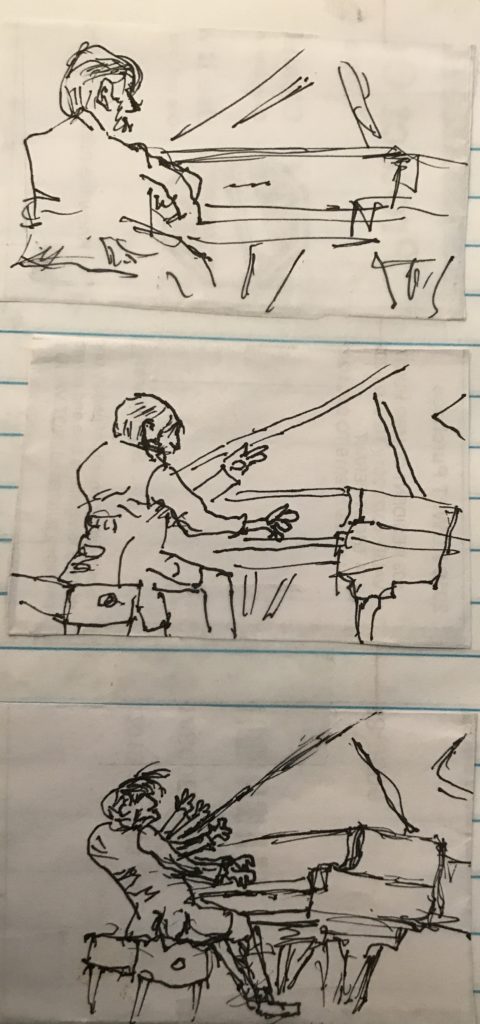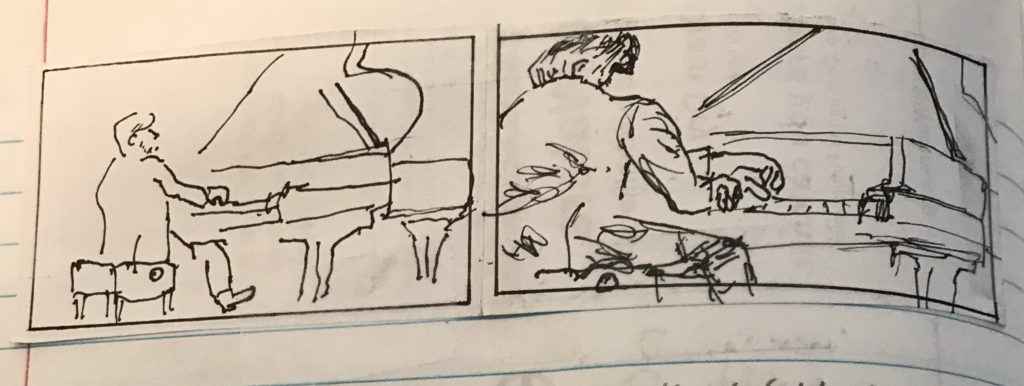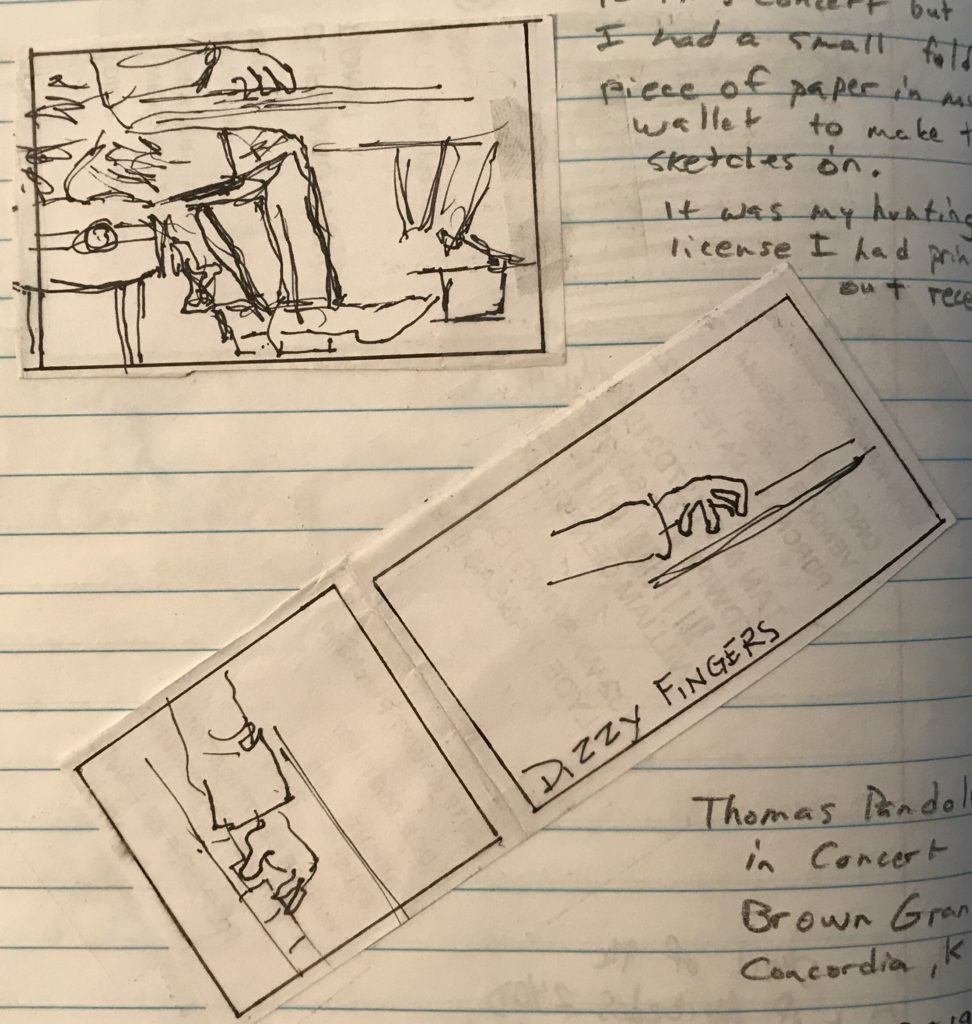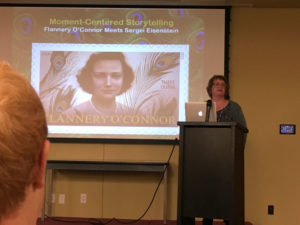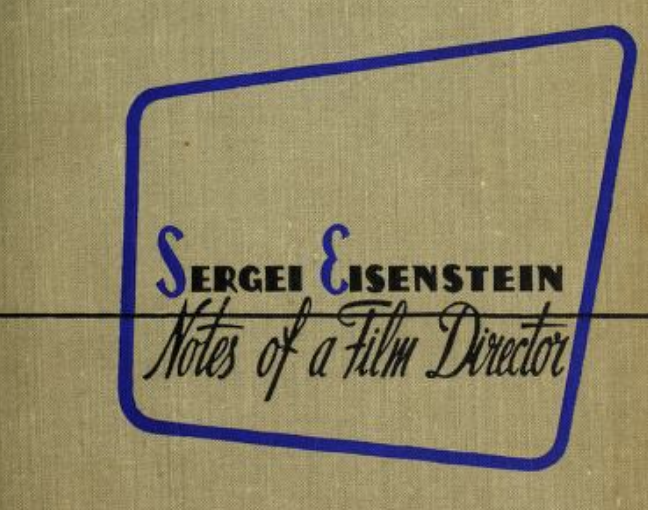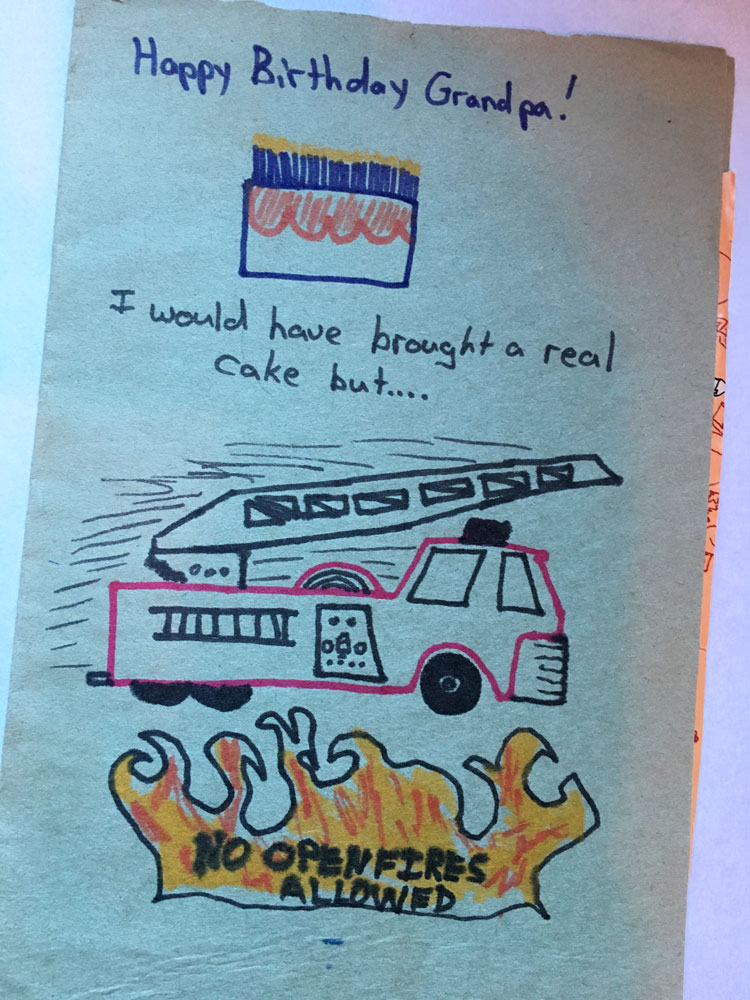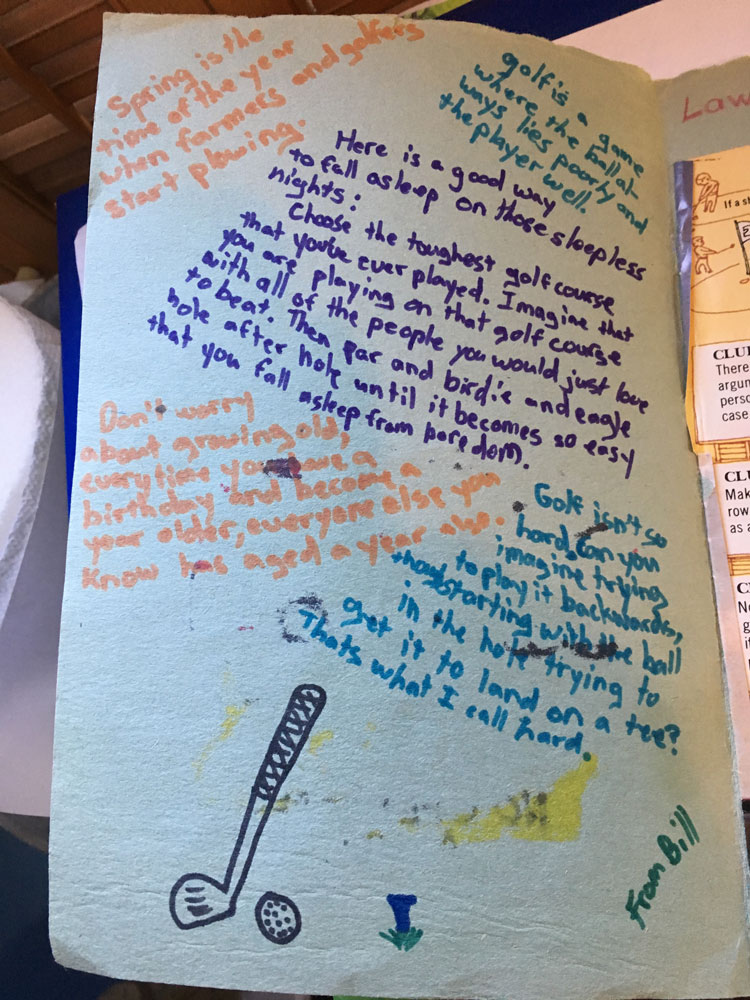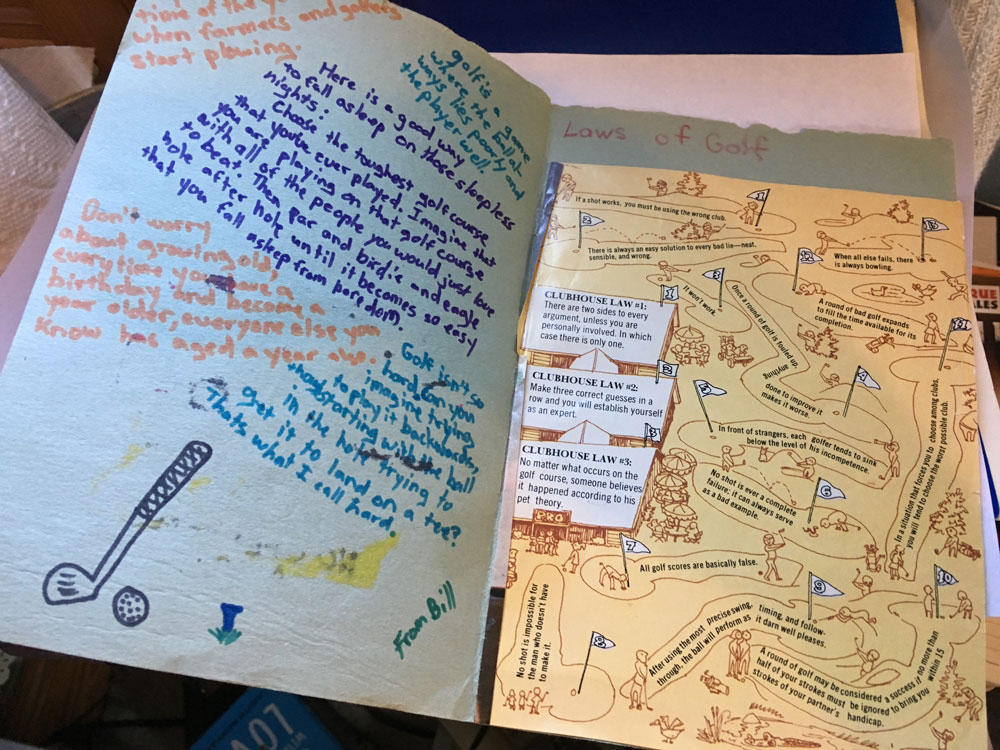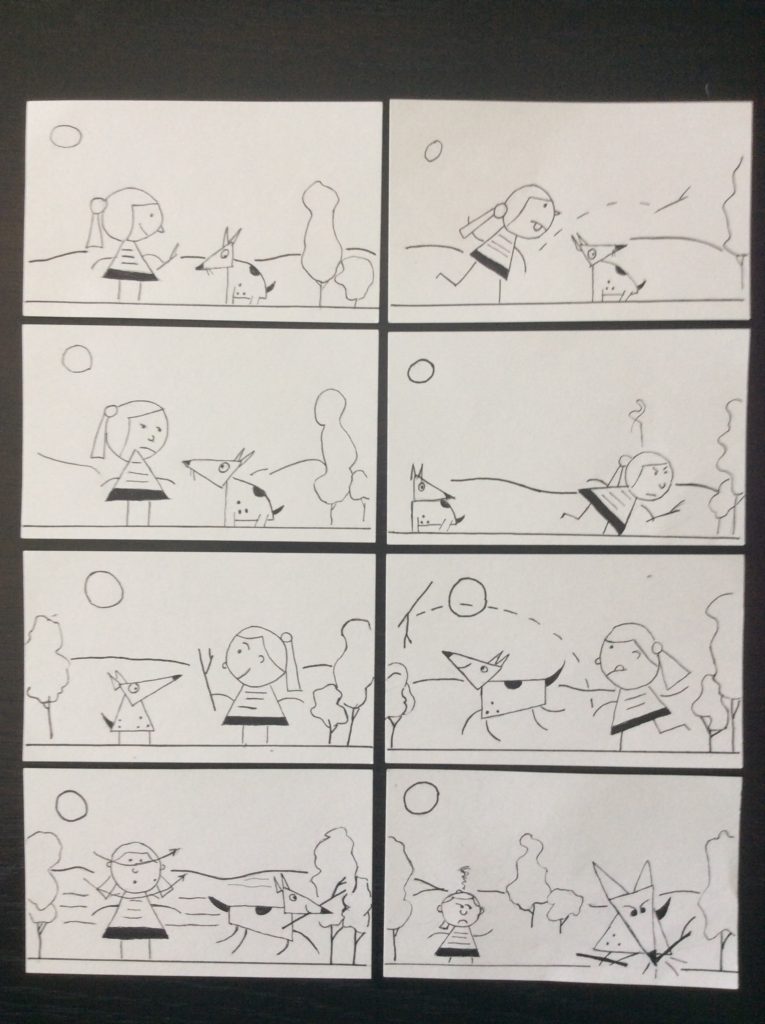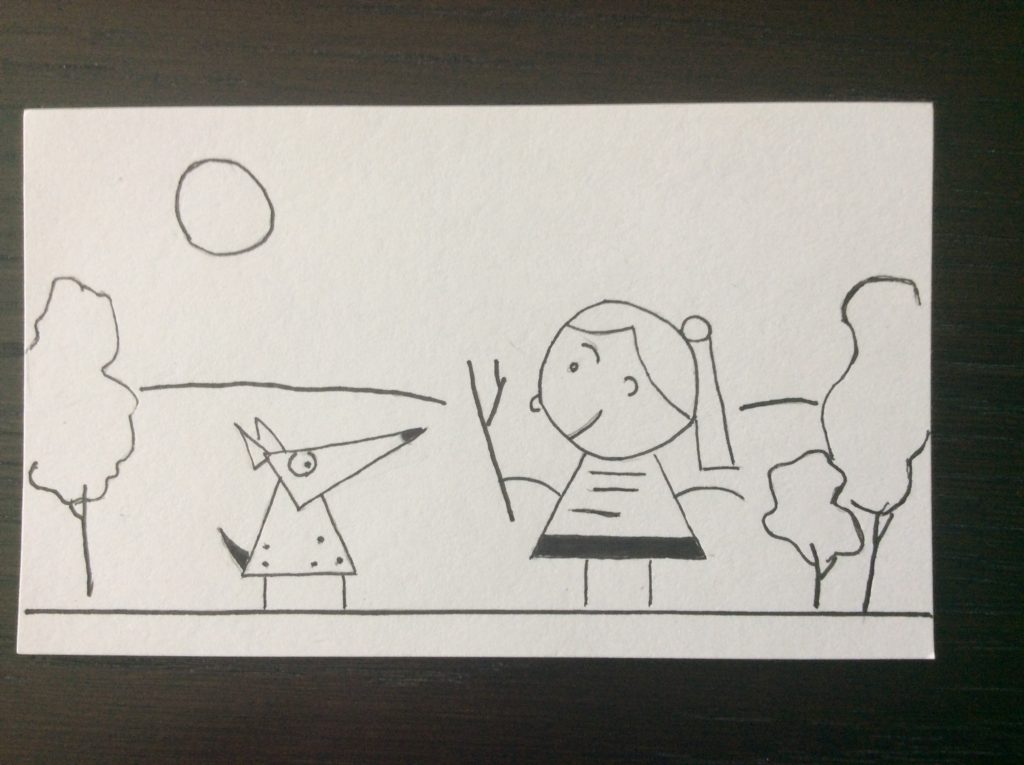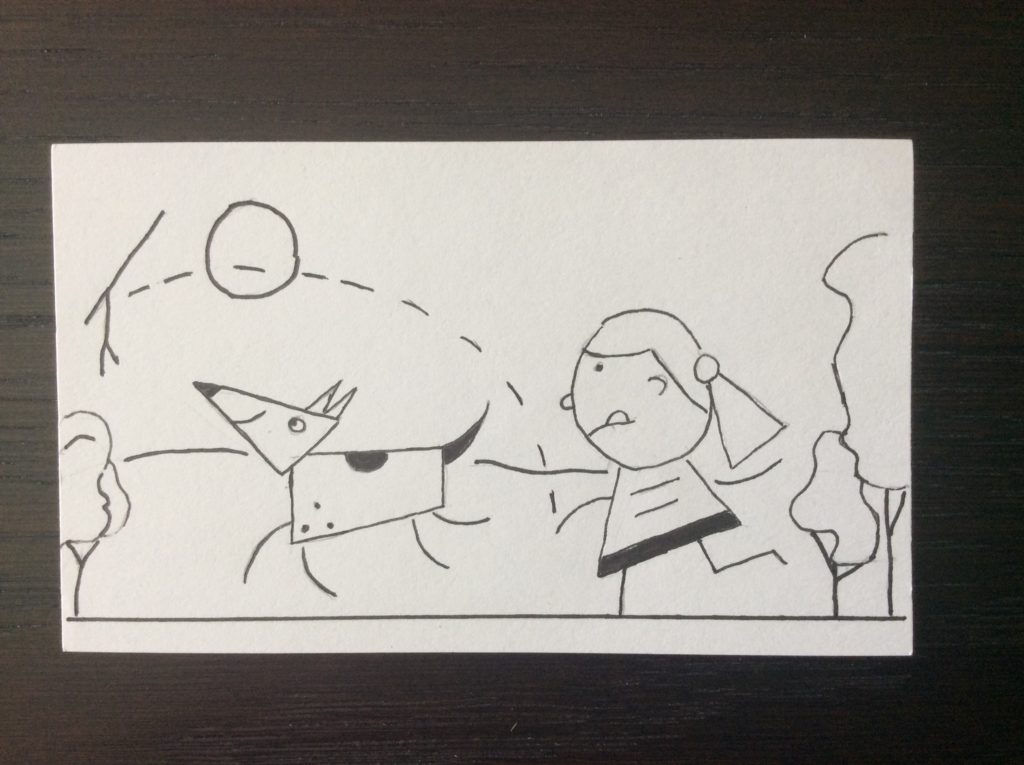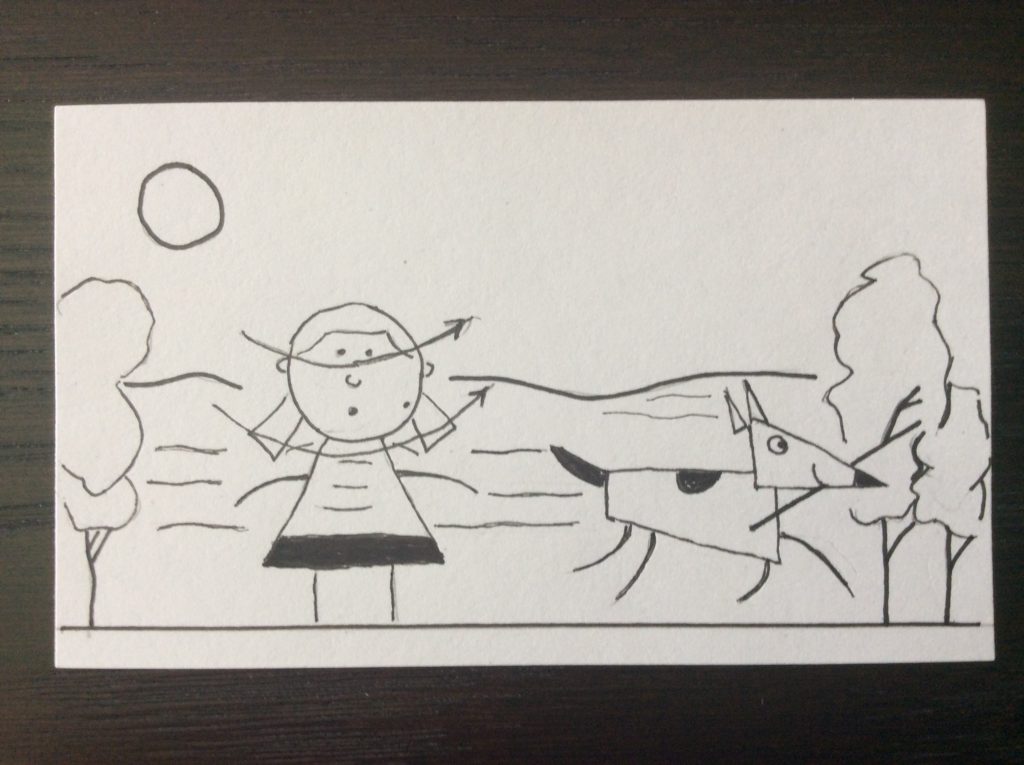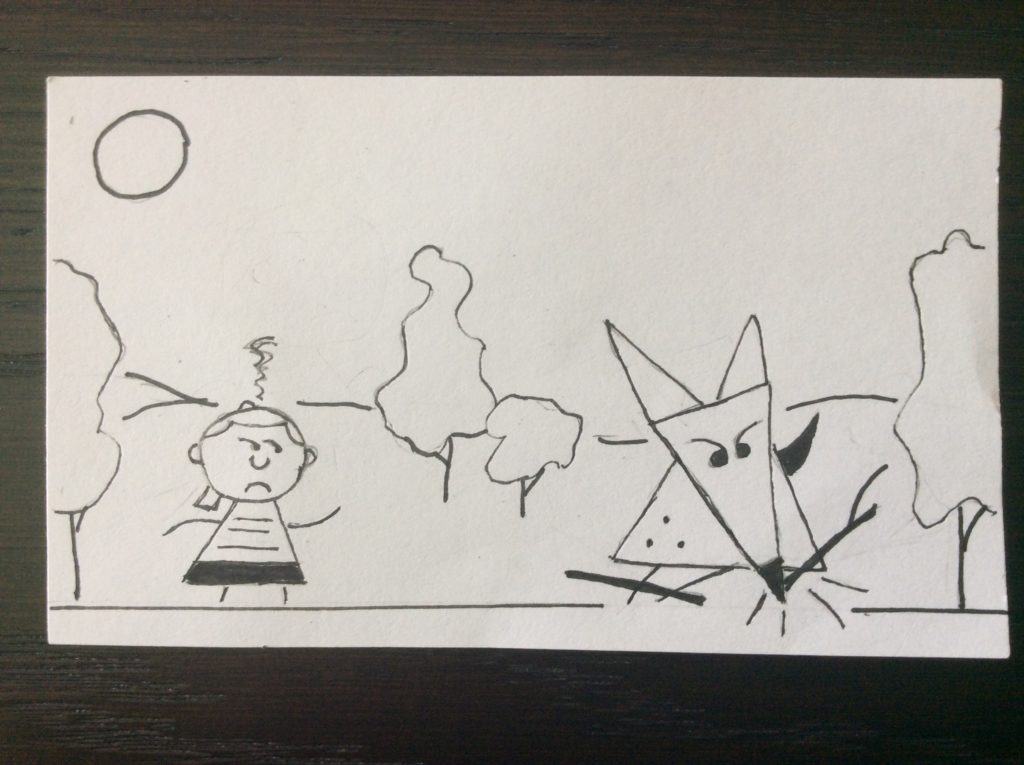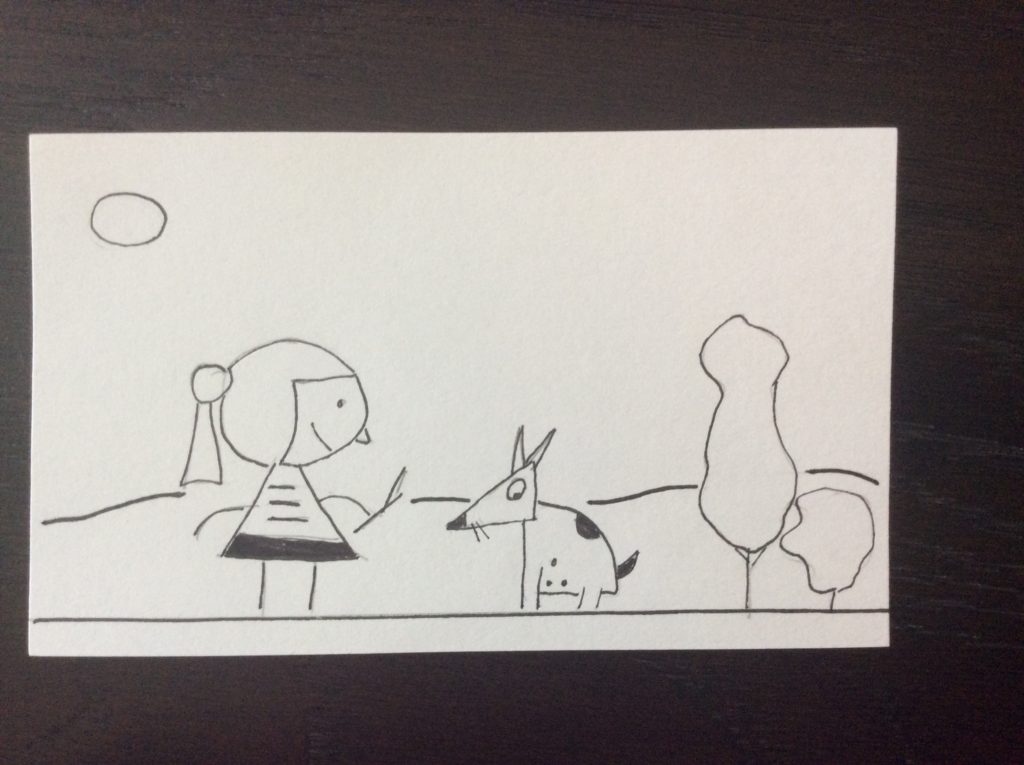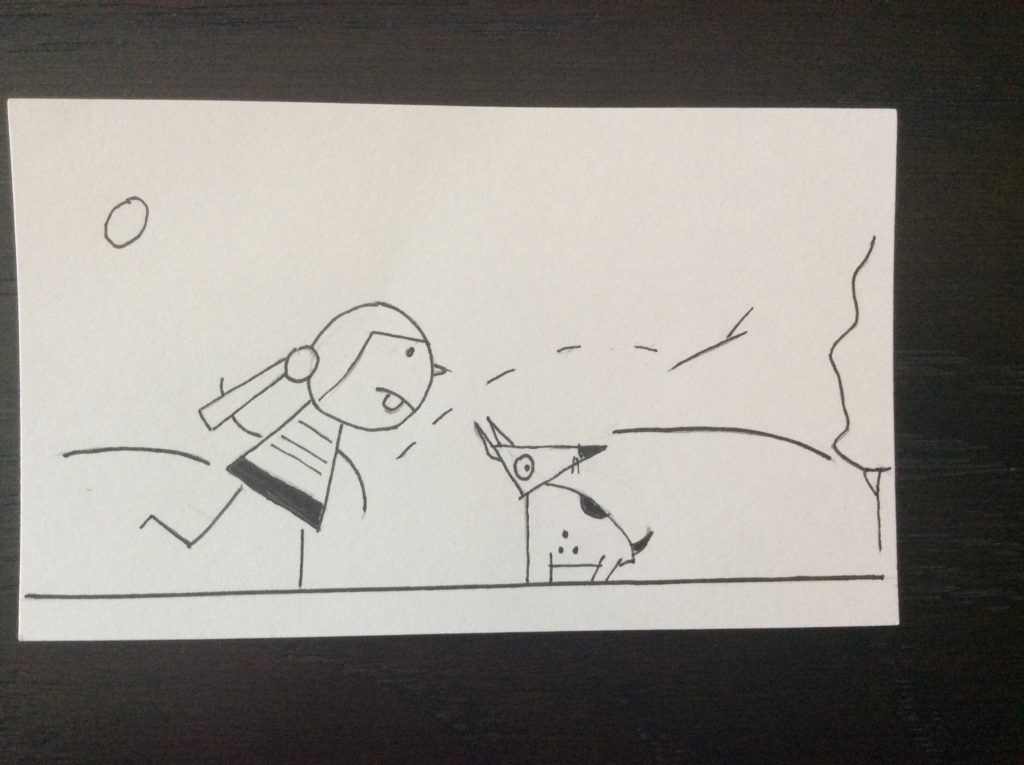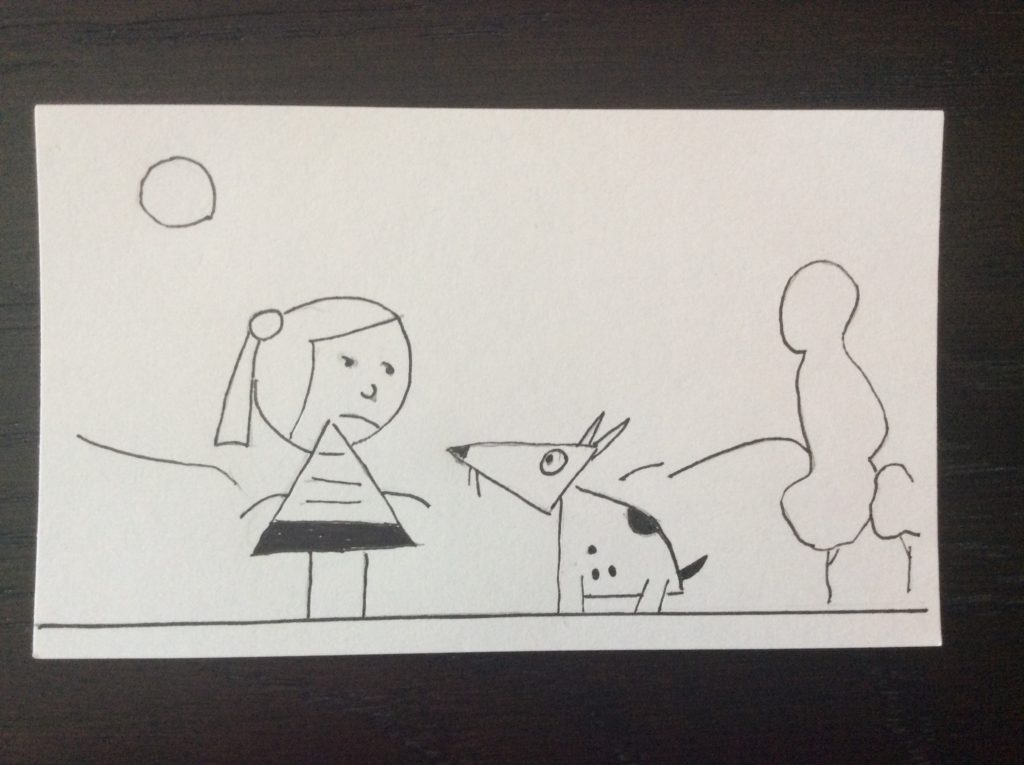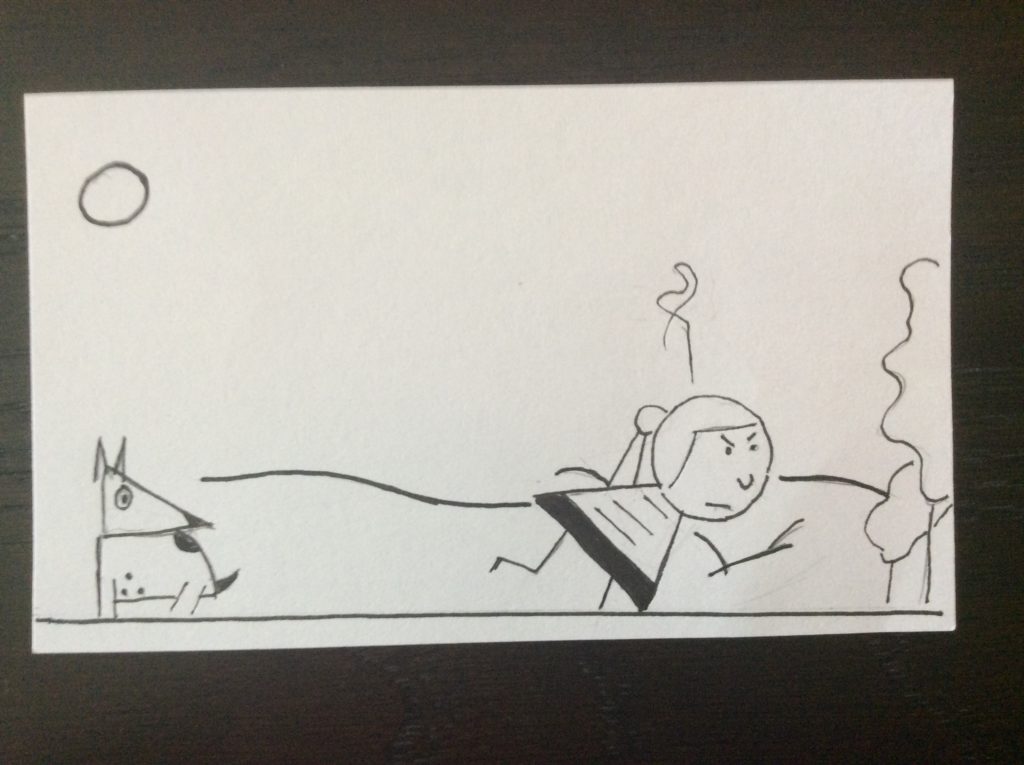On the Jim and Anto show on DS106 Radio they were talking about wolf stories. I tweeted that my favorite scary wolf story comes from one of my favorite novels, My Antonia, by Willa Cather. This is the story:
‘He is scared of the wolves,’ Antonia whispered to me. ‘In his country there are very many, and they eat men and women.’ We slid closer together along the bench.
I could not take my eyes off the man in the bed. His shirt was hanging open, and his emaciated chest, covered with yellow bristle, rose and fell horribly. He began to cough. Peter shuffled to his feet, caught up the teakettle and mixed him some hot water and whiskey. The sharp smell of spirits went through the room.
Pavel snatched the cup and drank, then made Peter give him the bottle and slipped it under his pillow, grinning disagreeably, as if he had outwitted someone. His eyes followed Peter about the room with a contemptuous, unfriendly expression. It seemed to me that he despised him for being so simple and docile.
Presently Pavel began to talk to Mr. Shimerda, scarcely above a whisper. He was telling a long story, and as he went on, Antonia took my hand under the table and held it tight. She leaned forward and strained her ears to hear him. He grew more and more excited, and kept pointing all around his bed, as if there were things there and he wanted Mr. Shimerda to see them.
‘It’s wolves, Jimmy,’ Antonia whispered. ‘It’s awful, what he says!’
The sick man raged and shook his fist. He seemed to be cursing people who had wronged him. Mr. Shimerda caught him by the shoulders, but could hardly hold him in bed. At last he was shut off by a coughing fit which fairly choked him. He pulled a cloth from under his pillow and held it to his mouth. Quickly it was covered with bright red spots—I thought I had never seen any blood so bright. When he lay down and turned his face to the wall, all the rage had gone out of him. He lay patiently fighting for breath, like a child with croup. Antonia’s father uncovered one of his long bony legs and rubbed it rhythmically. From our bench we could see what a hollow case his body was. His spine and shoulder-blades stood out like the bones under the hide of a dead steer left in the fields. That sharp backbone must have hurt him when he lay on it.
Gradually, relief came to all of us. Whatever it was, the worst was over. Mr. Shimerda signed to us that Pavel was asleep. Without a word Peter got up and lit his lantern. He was going out to get his team to drive us home. Mr. Shimerda went with him. We sat and watched the long bowed back under the blue sheet, scarcely daring to breathe.
On the way home, when we were lying in the straw, under the jolting and rattling Antonia told me as much of the story as she could. What she did not tell me then, she told later; we talked of nothing else for days afterward.
When Pavel and Peter were young men, living at home in Russia, they were asked to be groomsmen for a friend who was to marry the belle of another village. It was in the dead of winter and the groom’s party went over to the wedding in sledges. Peter and Pavel drove in the groom’s sledge, and six sledges followed with all his relatives and friends.
After the ceremony at the church, the party went to a dinner given by the parents of the bride. The dinner lasted all afternoon; then it became a supper and continued far into the night. There was much dancing and drinking. At midnight the parents of the bride said good-bye to her and blessed her. The groom took her up in his arms and carried her out to his sledge and tucked her under the blankets. He sprang in beside her, and Pavel and Peter (our Pavel and Peter!) took the front seat. Pavel drove. The party set out with singing and the jingle of sleigh-bells, the groom’s sledge going first. All the drivers were more or less the worse for merry-making, and the groom was absorbed in his bride.
The wolves were bad that winter, and everyone knew it, yet when they heard the first wolf-cry, the drivers were not much alarmed. They had too much good food and drink inside them. The first howls were taken up and echoed and with quickening repetitions. The wolves were coming together. There was no moon, but the starlight was clear on the snow. A black drove came up over the hill behind the wedding party. The wolves ran like streaks of shadow; they looked no bigger than dogs, but there were hundreds of them.
Something happened to the hindmost sledge: the driver lost control—he was probably very drunk—the horses left the road, the sledge was caught in a clump of trees, and overturned. The occupants rolled out over the snow, and the fleetest of the wolves sprang upon them. The shrieks that followed made everybody sober. The drivers stood up and lashed their horses. The groom had the best team and his sledge was lightest—all the others carried from six to a dozen people.
Another driver lost control. The screams of the horses were more terrible to hear than the cries of the men and women. Nothing seemed to check the wolves. It was hard to tell what was happening in the rear; the people who were falling behind shrieked as piteously as those who were already lost. The little bride hid her face on the groom’s shoulder and sobbed. Pavel sat still and watched his horses. The road was clear and white, and the groom’s three blacks went like the wind. It was only necessary to be calm and to guide them carefully.
At length, as they breasted a long hill, Peter rose cautiously and looked back. ‘There are only three sledges left,’ he whispered.
‘And the wolves?’ Pavel asked.
‘Enough! Enough for all of us.’
Pavel reached the brow of the hill, but only two sledges followed him down the other side. In that moment on the hilltop, they saw behind them a whirling black group on the snow. Presently the groom screamed. He saw his father’s sledge overturned, with his mother and sisters. He sprang up as if he meant to jump, but the girl shrieked and held him back. It was even then too late. The black ground-shadows were already crowding over the heap in the road, and one horse ran out across the fields, his harness hanging to him, wolves at his heels. But the groom’s movement had given Pavel an idea.
They were within a few miles of their village now. The only sledge left out of six was not very far behind them, and Pavel’s middle horse was failing. Beside a frozen pond something happened to the other sledge; Peter saw it plainly. Three big wolves got abreast of the horses, and the horses went crazy. They tried to jump over each other, got tangled up in the harness, and overturned the sledge.
When the shrieking behind them died away, Pavel realized that he was alone upon the familiar road. ‘They still come?’ he asked Peter.
‘Yes.’
‘How many?’
‘Twenty, thirty—enough.’
Now his middle horse was being almost dragged by the other two. Pavel gave Peter the reins and stepped carefully into the back of the sledge. He called to the groom that they must lighten—and pointed to the bride. The young man cursed him and held her tighter. Pavel tried to drag her away. In the struggle, the groom rose. Pavel knocked him over the side of the sledge and threw the girl after him. He said he never remembered exactly how he did it, or what happened afterward. Peter, crouching in the front seat, saw nothing. The first thing either of them noticed was a new sound that broke into the clear air, louder than they had ever heard it before—the bell of the monastery of their own village, ringing for early prayers.
Pavel and Peter drove into the village alone, and they had been alone ever since. They were run out of their village. Pavel’s own mother would not look at him. They went away to strange towns, but when people learned where they came from, they were always asked if they knew the two men who had fed the bride to the wolves. Wherever they went, the story followed them. It took them five years to save money enough to come to America. They worked in Chicago, Des Moines, Fort Wayne, but they were always unfortunate. When Pavel’s health grew so bad, they decided to try farming.
Pavel died a few days after he unburdened his mind to Mr. Shimerda, and was buried in the Norwegian graveyard. Peter sold off everything, and left the country—went to be cook in a railway construction camp where gangs of Russians were employed.
At his sale we bought Peter’s wheelbarrow and some of his harness. During the auction he went about with his head down, and never lifted his eyes. He seemed not to care about anything. The Black Hawk money-lender who held mortgages on Peter’s livestock was there, and he bought in the sale notes at about fifty cents on the dollar. Everyone said Peter kissed the cow before she was led away by her new owner. I did not see him do it, but this I know: after all his furniture and his cookstove and pots and pans had been hauled off by the purchasers, when his house was stripped and bare, he sat down on the floor with his clasp-knife and ate all the melons that he had put away for winter. When Mr. Shimerda and Krajiek drove up in their wagon to take Peter to the train, they found him with a dripping beard, surrounded by heaps of melon rinds.
The loss of his two friends had a depressing effect upon old Mr. Shimerda. When he was out hunting, he used to go into the empty log house and sit there, brooding. This cabin was his hermitage until the winter snows penned him in his cave. For Antonia and me, the story of the wedding party was never at an end. We did not tell Pavel’s secret to anyone, but guarded it jealously—as if the wolves of the Ukraine had gathered that night long ago, and the wedding party been sacrificed, to give us a painful and peculiar pleasure. At night, before I went to sleep, I often found myself in a sledge drawn by three horses, dashing through a country that looked something like Nebraska and something like Virginia.
